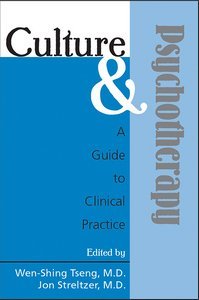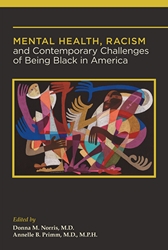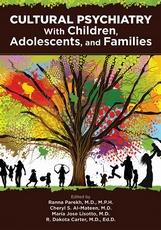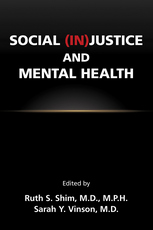Culture and Psychotherapy
A Guide to Clinical Practice
View Pricing
Description
Cultural diversity has always been a fact of life, nowhere more so than in the unique melting pot of U.S. society. Respecting and understanding that diversity is an important—and challenging—goals. Culture and Psychotherapy: A Guide to Clinical Practice brings us closer to that goal by offering a fresh perspective on how to bring an understanding of cultural diversity to the practice of psychotherapy to improve treatment outcomes.
This remarkable work presents the nuts and bolts of incorporating culture into therapy, in a way that is immediately useful and practical. Illustrated by numerous case studies that demonstrate issues, techniques, and recommendations, the topics in this wide-ranging volume focus not on specific race or ethnicity but instead on culture.
- Introduction—Summarizes the influence of culture (an abstract concept defined as an entity apart from race, ethnicity, or minority) on the practice and process of psychotherapy while offering a broadened definition of psychotherapy as a special practice involving a designated healer (or therapist) and identified client (or patient) to solve a client's problem or promote a client's mental health
- Case Presentations and Analysis—Illustrates distinctive cultural issues and overtones within psychotherapy, such as the traditional Japanese respect for authority figures, the Native American concept of spirit songs, the clash of modern values with traditional Islamic codes, and the effects of the conflict between Eastern values of dependence and group harmony and Western values of independence and autonomy
- Specific Issues in Therapy—Discusses lessons from folk healing, the cultural aspects of the therapist-patient relationship, and the giving and receiving of medication as part of therapy
- Treating Special Populations—Presents issues and trauma faced by African Americans, Hispanic veterans, Southeast Asian refugees, adolescents, and the ethnic minority elderly
- Special Models of Therapy—Shows the interplay between cultural issues and specific models of therapy, including marital therapy for intercultural couples and group therapy with multiethnic members
The relevance of cultural diversity will only grow stronger in the coming years as our definition of community expands to embrace global—not just local—issues. With its balanced combination of clinical guidance and conceptual discussion highlighted by fascinating case studies, this volume, authored by national and international experts, offers psychotherapists, psychiatrists, psychologists, psychiatric residents, psychiatric nurses, and mental health social workers—both in the U.S. and abroad—an expansive focus and richness of content unmatched elsewhere in the literature.
Contents
- Contributors
- Preface
- PART 1: Introduction
- Chapter 1. Culture and Psychotherapy: An Overview
- PART 2: Case Presentations and Analysis
- Chapter 2. The Man Who Became a Child in the Face of Death
- Chapter 3. The Woman With One Foot in the Past
- Chapter 4. The Woman Who Could Not Escape Her Spirit Song
- Chapter 5. The Woman Who Alienated Her Family After Losing Her Son
- Chapter 6. One Patient, Three Therapists
- PART 3: Special Issues in Therapy
- Chapter 7. Lessons From Folk Healing Practices
- Chapter 8. Therapist-Patient Relations and Ethnic Transference
- Chapter 9. Psychological Aspects of Giving and Receiving Medications
- PART 4: Treating Special Populations
- Chapter 10. The African American
- Chapter 11. The Hispanic Veteran
- Chapter 12. The Southeast Asian Refugee: The Legacy of Severe Trauma
- Chapter 13. The Adolescent
- Chapter 14. The Ethnic Minority Elderly
- PART 5: Special Models of Therapy
- Chapter 15. Marital Therapy for Intercultural Couples
- Chapter 16. Group Therapy With Multiethnic Members
- PART 6: Integration and Conclusions
- Chapter 17. Integration and Conclusions
- Index
About the Authors
Wen-Shing Tseng, M.D., is a Professor in the Department of Psychiatry at the John A. Burns School of Medicine; University of Hawaii, Honolulu, Hawaii. Dr. Tseng is also a Guest Professor at the Institute of Mental Health, Beijing Medical University in Beijing, China; and a Honorable Advisor to the Transcultural Psychiatry Section of the World Psychiatric Association.
Jon Streltzer, M.D., is a Professor in the Department of Psychiatry at the John A. Burns School of Medicine at the University of Hawaii in Honolulu, Hawaii.
Related Products
Carousel Control - items will scroll by tabbing through them, otherwise arrows can be used to scroll one item at a time








